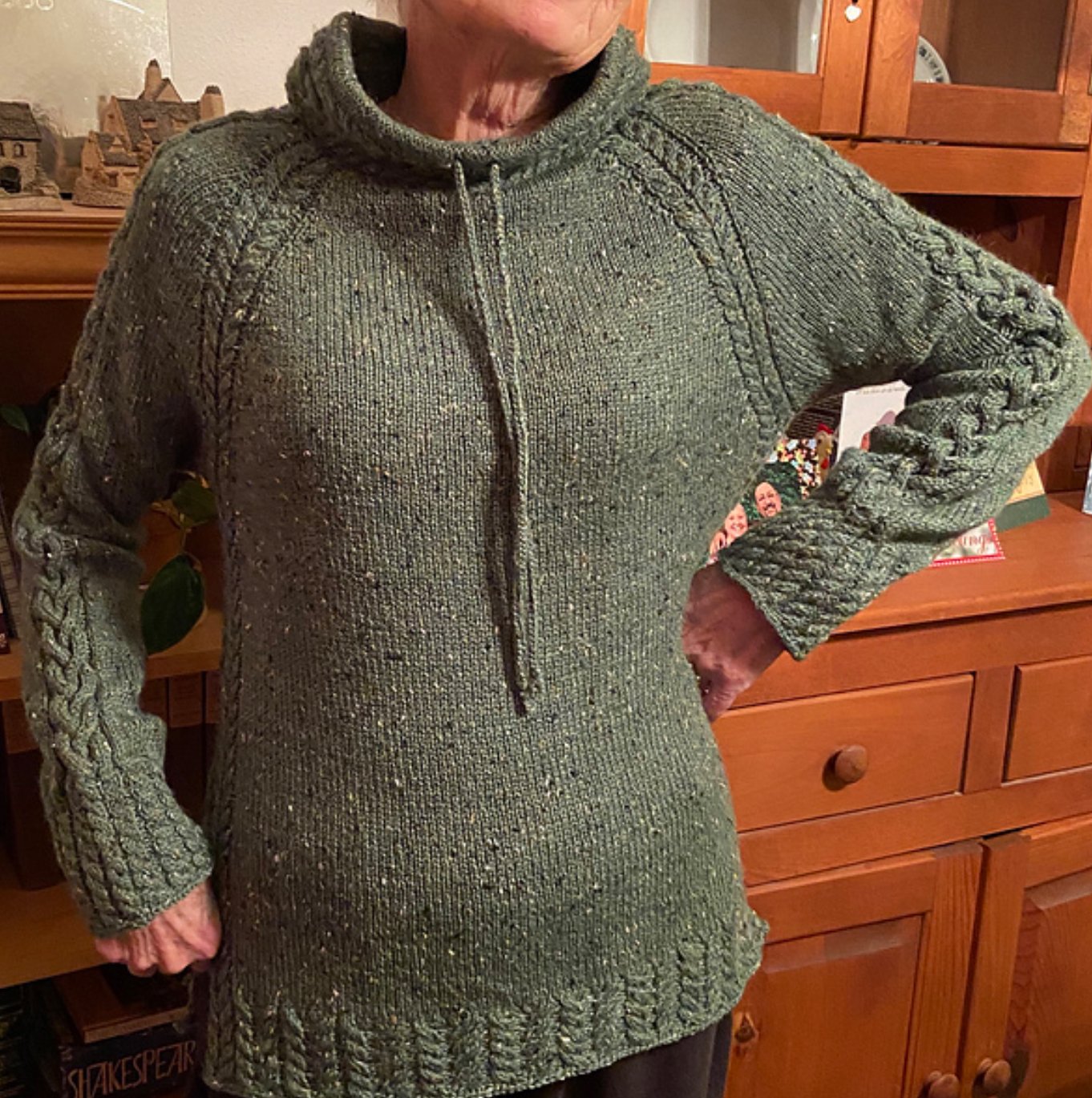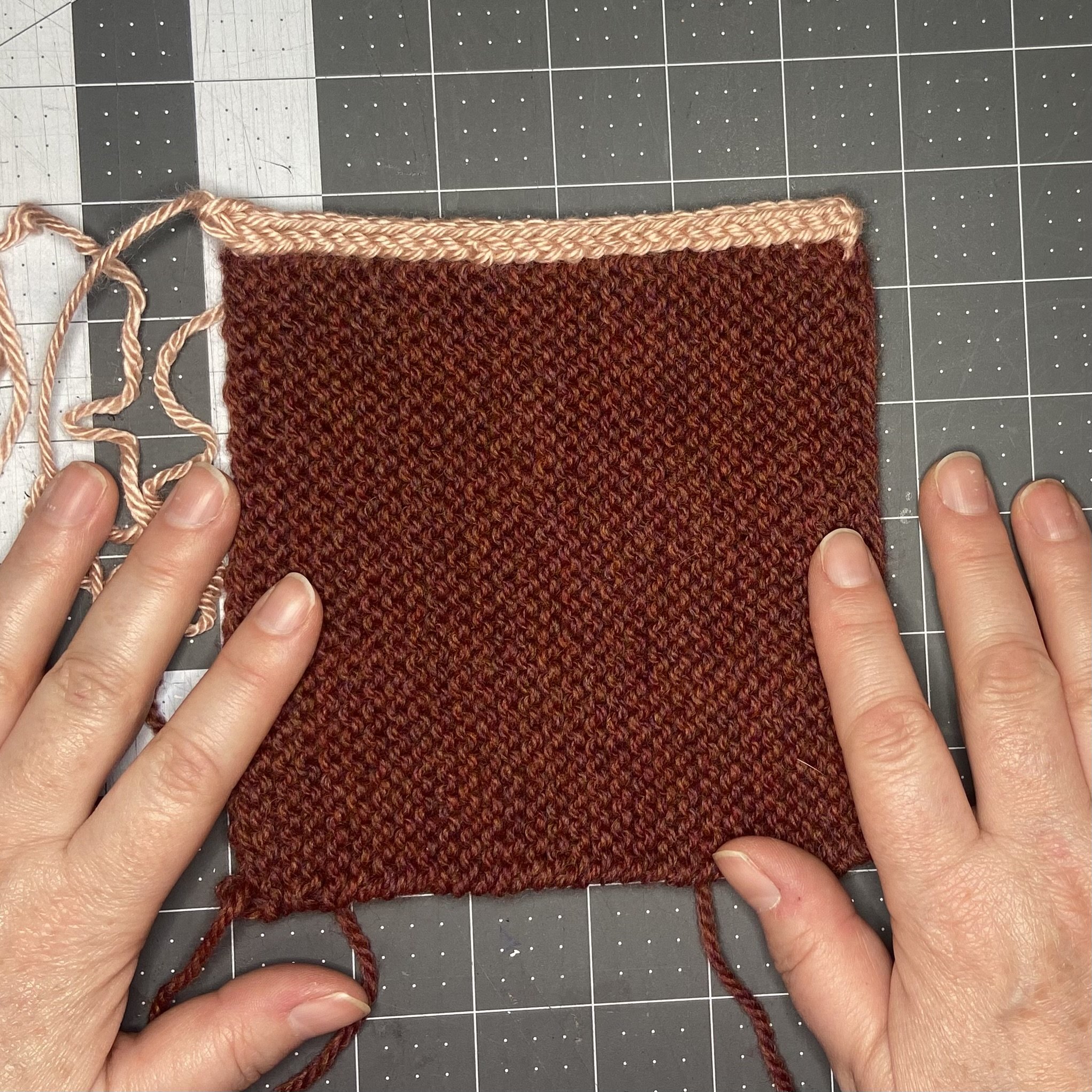Adventures In Idiot Cord
As an Amazon associate, I may earn a small commission if you navigate to Amazon from my site and buy something. This will not result in an extra cost to you.
Elizabeth Zimmermann could reasonably be considered knitting royalty. She’s written a number of books, has done a knitting series on PBS with her daughter Meg Swanson, and is widely considered to have brought the art of knitting back into vogue in the United States. Wikipedia has an excellent entry on her, listing among her achievements the “Pi shawl,” the EPS formula (Elizabeth’s percentage system), and idiot cord (i-cord). Zimmermann modestly did not generally claim to have invented any of these concepts. Rather, she would claim to have “un-vented” them; as I understood her use of the term, she meant that nothing was ever really new, but she could not point to anyone else inventing the technique or concept, so she shared it as an “un-vention” with the understanding that probably someone somewhere had done it before her but no one had previously recorded it. In her own words from The Knitter’s Almanac:
“One un-vents something; one unearths it; one digs it up, one runs it down in whatever recesses of the eternal consciousness it has gone to ground. I very much doubt if anything is really new when one works in the prehistoric medium of wool with needles. The products of science and technology may be new, and some of them are quite horrid, but knitting? In knitting there are ancient possibilities; the earth is enriched with the dust of the millions of knitters who have held wool and needles since the beginning of sheep. Seamless sweaters and one-row buttonholes; knitted hems and phoney seams - it is unthinkable that these have, in mankind’s history, remained undiscovered and unknitted. One likes to believe that there is memory in the fingers; memory undeveloped, but still alive.”
At any rate, Zimmermann definitely popularized the tiny tubular knitting she called “idiot cord” (and which the rest of us call i-cord). It’s about the easiest thing in the world. Cast on three or four stitches on a double pointed needle. Then slide the stitches to the other end of the needle and use a second double pointed needle to knit them. Slide the stitches to the other end of the needle and knit again. The idea is that instead of knitting back and forth in rows, you are knitting a teensy tube, which is useful for many things.
You can use it to make a little cord to thread through a tube and tighten a closure, be it at wrist, neck, or waist. You can knit a bunch of it just to have as thick, soft string to use like you’d use any string; just don’t cut it or it will unravel, like any knitting would. When I was a kid, my mother had a little hand-cranked i-cord knitting machine with which my brothers and I were fascinated. We cranked off tons of i-cord, using yarn my mother had laying about (and presumably had no use for), and then we did stuff with it. I can’t remember what we did with it, because I didn’t honestly care much about its utility. I was mostly just mesmerized by watching the little needles knit round and round and round, extruding i-cord out the bottom of the machine.
These days, if I need i-cord for something, I knit it by hand. I think the last time I knit i-cord was for was a drawstring for the collar of a sweater I knit my mother for Christmas. The sweater was “Harley” from the KnitPicks website, knit in KnitPicks’ City Tweed DK yarn in the colorway “Basil”, which sadly appears to no longer be available.
I have two upcoming projects for which I wish to deploy a different application of i-cord, generally referred to as “applied i-cord” or “attached i-cord.” This is where you are knitting i-cord, but attaching it to the edge of a piece of knitting as you go, usually as a finishing edge. I used this to edge the Moderne Log Cabin blanket I made for my sister-in-law some years ago, and for that project, I knitted the live stitches with the i-cord (an excellent cast-off technique), which makes the i-cord sit right on the edge of the knitting. But for the sides of the blanket without live stitches, I picked up stitches ahead of time from the back to the front, which sets the i-cord on the front of the work instead of right on the edge. It’s an inescapable side effect of the technique, but when doing i-cord this way, there is definitely a front and a back to the work.
What I wanted instead was a way to have the i-cord wrap around the edge, enclosing both front and back, on edges without any live stitches. Doing a little (YouTube) research showed me that the way to accomplish that is to pick up along the edge as you go instead of ahead of time. Also, after a little experimentation, I discovered that a four-stitch i-cord works better for this application than the more usual three-stitch i-cord.
Since the first project I want to work on will be a crochet afghan that I’m making my father for Christmas (shhhhh….don’t tell him!), I decided to crochet a little swatch of the afghan to see how it went. If any crochet enthusiasts are interested, it is pattern #30 from 101 Stitches For Afghans by Jean Leinhauser. (Unlike my old book, the current publication of this useful treatise on crochet includes charts in addition to the written instructions.) For the purposes of my little test, I carried the two colors of yarn up the side of the work for half of the swatch, and for the other half, I cut the pink yarn every two rows, the same way I would have to if I were using multiple colors instead of just two. This left me with an edge that was smooth for half of it, and lumpy with knots for the other half.
My pick-up-as-you go four-stitch attached i-cord does enclose the edges beautifully (both the smooth and the lumpy) and I’ve learned that along the edges where it’s necessary to pick up the little slipped stitches (top and bottom edges), the knit stitches are smaller than the crochet stitches and the work puckered and drew in. I had to rip it back and add an extra row of unattached i-cord every so often to make sure the edges did not pucker.
Along the sides, where I just had to attach the i-cord wherever I had space, such easing wasn’t really necessary because I was just attaching each stitch where it seemed to fit, which made it come even. And of course, I had to add a couple extra rows at the corners, to get the i-cord to make the turn. My “magic formula” for the corners was to attach up to the corner, knit an unattached row, knit an attached row as close to the actual peak of the corner as I could get, then another unattached row. Then carry on along the next edge. Seemed to work okay.
This will be a very large blanket, and so the i-cord edging will take awhile. But as I get older and learn to enjoy the process as much as the result, I don’t mind that at all. It’s relaxing and I love watching the i-cord taking shape along the edge. Pretty and rewarding.
I also want to alter a big pullover sweater (man-sized) into a vest (me-sized), which will involve some cutting of the knit fabric. And I think i-cord will look lovely as a way to finish the cut edge, as well as a way to add some button loops to the edge. I did a swatch for that also, and judged that about twenty rows of unattached i-cord was enough to make a generous button loop. Then attach again and continue along the edge.
Both of these projects are a little way into the future, so who knows if I will end up using this i-cord technique to finish them. But I might, and even if I don’t, it was a fun exercise. And knitting should be fun! So should crochet.












